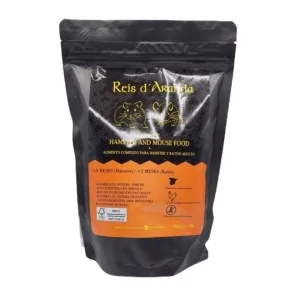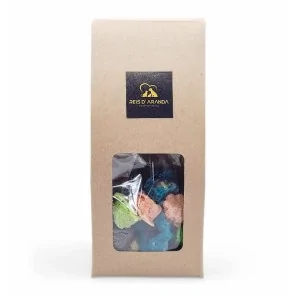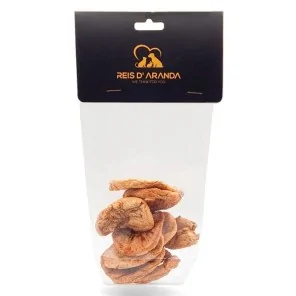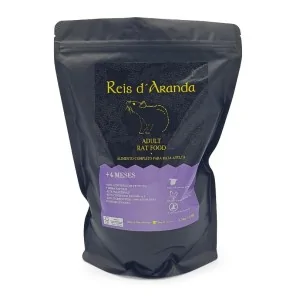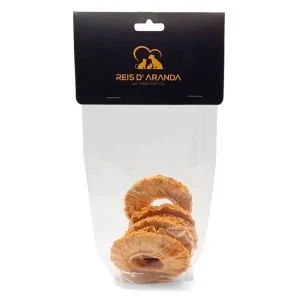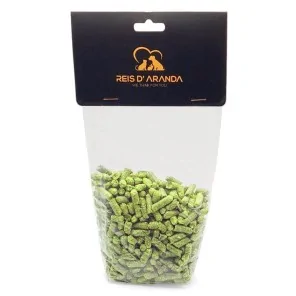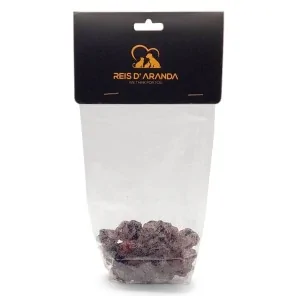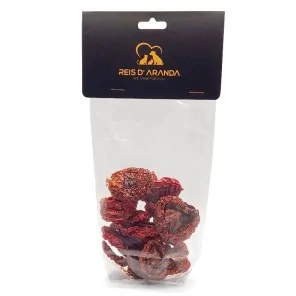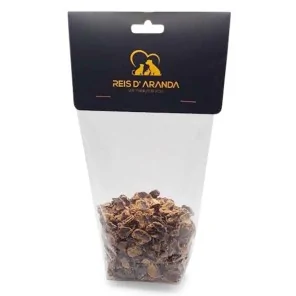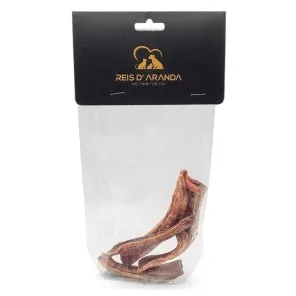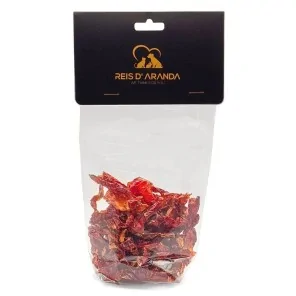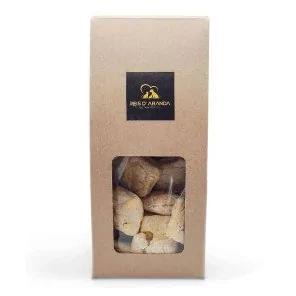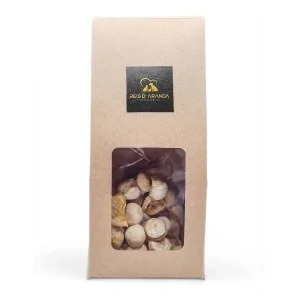The Tornjak originated from genetically homogeneous, almost extinct, indigenous shepherd dogs. These dogs have...
WHAT SHOULD MY HAMSTER'S HABITAT BE LIKE?
THE RIGHT HABITAT FOR MY HAMSTER
"Habitat" is the name usually given to the hamster's house, a kinder way than saying "cage" (a word that many "new generation" owners associate with something negative). This, how it is made, the materials that conform it, its measures or elements are very important measures or elements are very important for our hamster to enjoy a good physical and mental health; besides, it is the point with more propensity to fail at the moment of acquiring one, especially due to the little information that there is and the terrible ignorance on the part of the salesmen of the usual pet stores. An inadequate habitat can be a real problem for our hamster, affect his health or lead him directly to death (even if it sounds strong, it is one of the most common consequences).
But, how should be the habitat of our hamster to be respectful with his nature, correct for his mental health and safe for himself? What elements should we avoid or what substrate to use, how much and why?
In this section of the book we will see which cage to use and what measures are necessary according to the species of hamster we have (among other things) but, first of all, we must engrave the golden rule: ONE PER HABITAT.
WHAT SHOULD MY HAMSTER'S HABITAT BE LIKE?
The first thing to know is that the commercial cages with bars, shaped like circuses, space stations or castles that are sold in stores or on the Internet are not suitable.
Then, why are they sold? Mainly because they are pretty, take up little space (big mistake) and, in many occasions, they are cheap.
When acquiring a cage for our hamster we have to take into account several things, the first one the size; the habitat of a Syrian hamster must be (at least) 100cm long x 50cm wide x 50cm high (with a volumetric capacity of 5000cm2) while, for dwarf hamsters, the minimum size will be 80cm long x 40cm wide, 50cm high and, a minimum capacity of 4000cm2. The bigger the better; in addition, we will opt for habitats without stairs or floors since, not being able to see well, it is quite easy for them to fall and get injured or die.
Another thing we have to take into account is that we should never use cages with bars; these, besides causing great stress to our hamster, can be very dangerous, since if they are not as close together as they should be, they can cause the animal to try to get out through them and get stuck, suffocating, fracturing a bone or, not being able to escape, suffering a cardiac arrest due to stress and panic.
Another thing we can observe (and which is common in this type of cages) is the sterotipia of compulsive biting, which will end up damaging the teeth.
TYPES OF ENCLOSURES FOR OUR HAMSTER
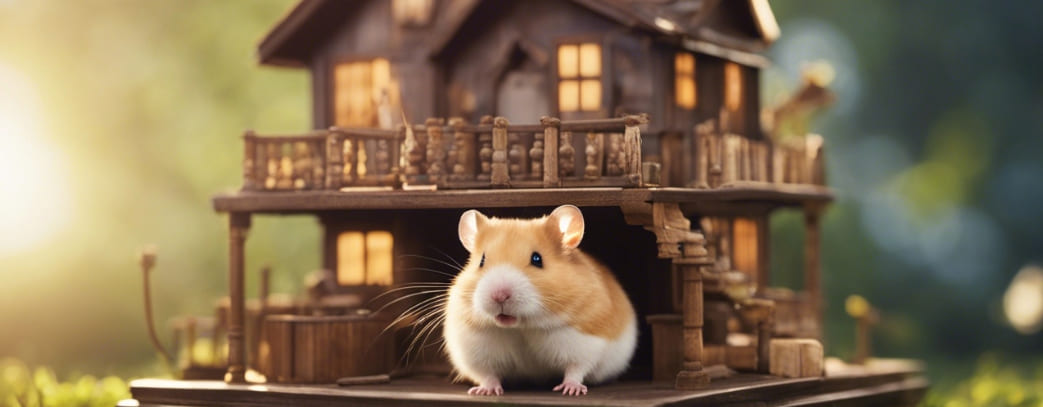
The best option for the habitat of our hamster, is to choose a "tupper" (as this type of cages is called); in the common market, it is quite improbable to find one of these characteristics because they are not common and, if you do (in some Asian page you can buy them) the prices are usually high.
Above all, we must pay special attention to ventilation, not only to prevent our hamster from suffocating, but also to prevent the temperature inside the cage from rising too high (heat stroke) or toxic vapors from urine from accumulating (which would cause respiratory problems for our pet). If we opt for a "tupper cage", 50%-75% of the lid will be adapted to put small hole chicken wire.
The use of storage boxes as hamster cages is quite popular but, unlike the following options we will see, these require work and adaptation that many people do not want to do (either because they do not feel like doing it or because they do not have enough "know-how" and it is beyond them, even though it is something relatively simple).
In the market, we can find many boxes of this style in various sizes and heights (remember: the longer, wider and higher the better), some include wheels for easy transport and the plastic fasteners included to prevent the lid from moving is a plus; in case we want to make it very large (photo on the right) we will have to cut and join using special anti-humidity silicones and be patient, the plastic of these boxes is usually "soft" and breaks or splits easily if we are too rough, so we must be careful when adapting them.
Another option of cage for our hamster are the terrariums for reptiles, these are of good size, usually have a correct ventilation (although we can change the top cover, as in the photo below, so that it has more), and we will not have to invest too much time in its adaptation.
Glass walls are very attractive and will allow us to observe our hamster most of the time (even if it buries itself in the substrate), it is one of the most hygienic options available and, as the walls are smooth, our hamster will not have the possibility of climbing (with the danger of falling) and / or escape. In the summer months they are a great help, since the glass (being inside the house) is much cooler than plastic, so we will avoid the dreaded hot flashes.
One of the most important things to keep in mind is that they are not at all light, so we will have to handle them with help and, at the time of cleaning, be careful not to break or damage any of the glass panels that make it up. The prices of good sized terrariums are not usually low (unless we choose to look in second hand ads), but their resistance will allow us to use them for several years.
These "glass cages" can be found with top opening (photo above) or front opening (photo on the left). Taking into account that hamsters need several centimeters of substrate to be able to make tunnels and be comfortable, the best option is always to opt for a top opening terrarium, since, otherwise, we could not open it without the "danger" that all the substrate would fall to the floor (and our hamster with it, if we do not notice and he is distracted). The picture we can find in this page is very attractive too, isn't it? Well, its decoration is not suitable either, but we will see this a little later.
Another option to consider are fish aquariums; like terrariums they are a fantastic option but, in these cases, ventilation is usually minimal, so it is recommended not to place the lid to improve the air inlet and outlet (not having good ventilation can create odors and fungi due to humidity). Since in these cases the lid has to be removed, we will have to make sure that it is high enough to prevent our hamster from escaping.
This type of "cages" are more suitable for the "Roborovski" hamsters than for the "Sirios", since the latter, being bigger, will have it easier to climb and escape.
The wood and glass terrariums are a good option in case we have certain carpentry skills, it is very common to use pine wood to make it and this, even being careful, it is easy to swell or produce fungus if hygiene is not as correct as it should be, plus the hamsters usually end up biting it, making a hole and leaving through it.
Most examples of this type that we can see on the internet, are handmade items adapted (being completely open at the top) to small size species, since a "Sirius", as in the other cases mentioned, would have it easy to get out of the enclosure using the decorative elements of the habitat.
WHEELS FOR HAMSTERS AND OTHER ELEMENTS
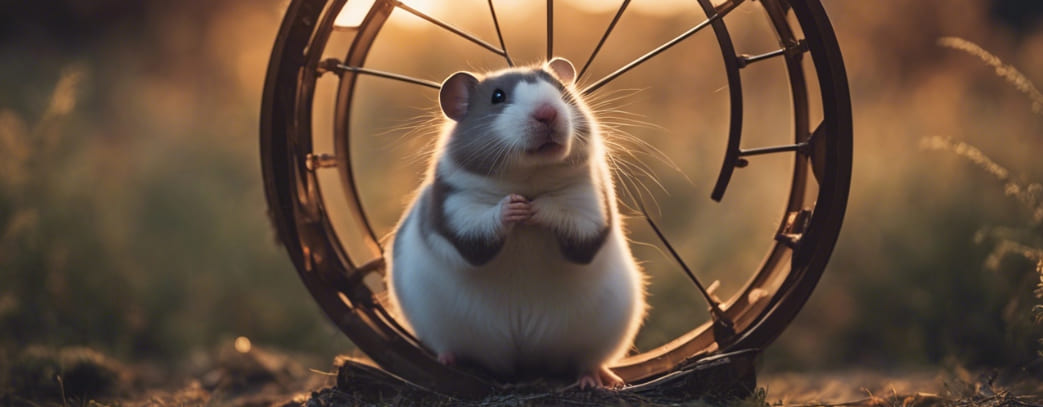
Now, we will focus on habitat elements, and what is more "traditional" than the wheel? All hamsters, whether in reality or in fiction, are shown with one, and it is true that it is very important for them to exercise (hamsters are incredibly active during the night) but, how should it be? Are there "forbidden" and "suitable" wheels? What do we have to look at to make it safe for our hamster?
The most "economical" wheels are terrible, dangerous in every way and useless for our hamster. We can see in all of them that they are made of poor quality plastic, thin and will break soon after starting to be used or that our hamster will gnaw it easily, besides being too small for him.
More than one reader will think that I exaggerate, that they are "wheels of all life" and that they cannot have such bad consequences, right? "They're sold for a reason."
Now, let's focus on habitat elements, and what's more "traditional" than the wheel? All hamsters, whether in reality or in fiction, are shown with one, and well it is true that it is very important for them to exercise (hamsters are incredibly active during the night) but how should it be? Are there "forbidden" and "suitable" wheels? What do we have to look at to make it safe for our hamster?
The cheapest wheels are terrible, dangerous in every way and useless for our hamster. We can see that they are of poor quality plastic, thin and will break shortly after starting to be used or that our hamster gnaws it easily, plus most are too small.
More than one reader will think that I exaggerate, that they are "wheels of all life" and that they can not have such bad consequences, right? "They are sold for a reason."
Many things unsuitable for animals are sold on the market, basically because they are cheap to produce and there is a general lack of knowledge that encourages them to be made.
THE CONSEQUENCES OF AN UNSUITABLE WHEEL
One of the worst consequences of "forbidden" hamster wheels is the "guillotine effect". This effect occurs when the supports that hold the wheel are on both sides of the wheel, hamsters are very fast animals and, when they want to get off the wheels and have these characteristics, it is very easy that some limb is trapped and, therefore, our pet ends up hooked in the wheel; the consequences of this effect are fatal because they range from fractures and serious injuries (in the best of cases), to amputations or death by trauma, internal bleeding or cardiac arrest due to the stress of being trapped.
This can be really traumatic for the owner (especially if it is young) so we must be very careful; as responsible for our pets, it is our duty to protect them from the possible dangers that surround them as long as this is in our hands. Inspite of the danger of this type of wheels, their commercialization is allowed.
Another detail to take into account is: how is the surface my hamster runs on made?
What about the wheels with a lattice surface, is it good for my hamster? The answer is "no", it is not good for them for two reasons: the first is that the hamster's plantar surfaces (hands and feet) are very delicate and the irregular and constant pressure of the wheel's grids can end up causing various conditions, including pododermatitis. The second reason is because they are unstable and the hands or feet can slip between two bars, causing dislocations, dismemberments and fractures. The right surface is the one we will see below, but... isn't that wheel a bit small? Exactly, that's another serious mistake first time owners make when choosing a wheel, not knowing that each species requires specific measurements.
Choosing an appropriate wheel size is very important, not only for our hamster to run comfortably and happily, but also to protect its health. A wheel that is too small will force our hamster to take a painful and forced posture (photo on the left), which will end up causing spinal injuries.
When buying a wheel, the measurements, depending on the species that our hamster is, are as follows:
-SIRIOSAND CHINESE: 25-30cm
-Dwarfs: 18-24cm
But, how should the base of the wheel be so that it can be well supported?
The most modern models of hamster wheels can be anchored to the bars of the cage by means of a hitch that comes on the back, but we have another problem: We cannot use barred cages for the reasons mentioned above. That is why we should opt for solid base wheels; if a wheel is well made and its base is correct (like the two examples we can find on this page) it is quite unlikely to tip over or give problems. The wooden ones (photo below) are wider and give a greater sense of security than the iron ones (photo above), the latter are usually a little cheaper than the wooden ones and more attractive thanks to the wide range of bright colors they have; in the case of opting for one of them we must make sure that it is of good quality and that the base is in perfect condition before purchasing it.
PROHIBITED EXERCISE TOOLS FOR HAMSTERS
Within the "forbidden exercise instruments" we can find the so famous plates (or "disks") that, although at first sight they seem nice and safe, they are not a good option. In more than one internet video we can find hamsters using them and, after a while, they fly off and fall on the substrate of the cage; this may seem funny but, in reality, it is quite dangerous. On the wheels, hamsters reach a high speed, but there is no danger and they can get off them without any problem (if they do not have the "guillotine effect"); this does not happen on the plates, here there is no way for the hamster to regulate the speed and it is very easy that, as it happens in the videos, they fly off and can hit against objects or walls of the habitat, getting injured or killed in the process. It is true that hamsters enjoy these "flying discs", but they are not good for them and we are the ones who must ensure their safety.
Hamster balls are one of the most famous and well-known accessories in the world of pets, movies or television. It is fun to see them running around the house or the garden inside them and we stay calm knowing that "nothing will happen to them", right? Well, this toy is the most dangerous of all, a completely inappropriate creation and that, against all odds, if that day our pet is unlucky it can end up in a very bad way.
But why?
The hamster balls have, first of all, a very poor and inefficient ventilation, the temperature cannot be well regulated inside and it is quite easy for our hamster to die from heat stroke or asphyxiation.
from heat stroke or asphyxiation.
On the other hand, when our hamster runs inside the ball there is nothing to stop it, and neither can it stop or escape when it acquires a certain speed; so the blows, collisions or falls are very frequent: down the stairs, holes in the railings, balconies, hits against the walls or furniture, holes in the garden...
If we want our hamster to have fun and exercise we can build it ourselves (if we like handicrafts and we have a hand for it) or buy toys and accessories to have in its habitat, as well as enrich it with different areas or textures; this point we will return to in the next chapter of the book, since one of the most important things that few people take into account is the substrate of the habitat.
TYPES OF SUBSTRATES FOR THE HAMSTER HABITAT
WOOD SHAVINGS
It usually contains a lot of dust, is harmful to the respiratory tract and promotes the development of tumors.
NOT SUITABLE.
CORN MILK
It has no dust although it must be changed regularly because it can generate fungus; choose a fine one. It does not generate heat (it must be combined with others).
SUITABLE
HENO
It does not have great absorption capacity, it serves as a complement for nests, tunnels or play.
SUITABLE (COMPLEMENT)
WOOD PELLETS
It is not as recommendable as wood shavings because, when disposed of, they cause a lot of dust; their shape and hardness can be uncomfortable to walk on and can cause injuries.
NOT SUITABLE
STRAW OR WHEAT PELLETS
They do not present the problems of wood pellets but can be uncomfortable to walk on and cause injuries. Can be combined with others.
SUITABLE (COMPLEMENT)
CAREFRESH LITTER
The best we can find, it is very hygienic, soft and absorbent, although not very commercialized and expensive.
SUITABLE
CAT LITTER
It is very dusty, very uncomfortable to walk on and can cause injuries to the skin, hands, feet or respiratory tract. Neither the "traditional" nor the "modern" ones (second photo) are recommended, it can be very toxic or be a great source of allergies.
PROHIBITED
PAPER PELLETS
They absorb urine very well, are soft and contain no dust. When "whole" they can be a little uncomfortable to walk on.
SUITABLE
NEWSPRINT
Does not absorb urine and the ink is toxic to hamsters. It is not recommended at all and its "durability" is more than minimal.
PROHIBITED
NAPKIN STRIPS
White napkin strips without odors or colors are one of the most appropriate substrates, especially when making tunnels. The disadvantage is that a lot of time is wasted making them (minimum 20 centimeters deep).
SUITABLE
RICE HUSK
As a by-product of the rice industry, it is an organic, biodegradable and healthy substrate; it does not retain much moisture, so it is necessary to change it frequently.
SUITABLE
MAGAZINE PAPER
Does not absorb urine and the ink is toxic to hamsters. It is not recommended at all and its "durability" is more than minimal.
Leave a comment
Log in to post comments
Comments
Gracias por el post
By: Violeta On 05/14/2024Un post muy interesante, no sabía de esta página pero me ha EN-CAN-TA-DO. Da gusto encontrar buena información y tan variada.
His house is important
By: Woody and Anabelle On 05/14/2024My hammy's name is Woody and he is very cuddly, I have him in a very tall 100cm tank, with lots of substrate and little houses. You can tell he is happy because he is already old and has never needed veterinary assistance.
Very good article
By: Gerb On 05/14/2024Very good article, i love it
Yo tengo uno ruso
By: Mónica On 05/14/2024Yo tengo uno ruso y lo tenía con asserín porque el veterinario me dijo que era lo mejor, voy a seguir investigando porque quiero que mi hammy viva muchos años
Good information
By: Danielle On 05/14/2024Very good information for all hamster owners.
Super interesante
By: Jaime On 05/14/2024No sabía que los hámster eran tan complicados de tener... Yo tuve de pequeño pero en las típicas jaulas pequeñitas que venden en las tiendas o en el veterinario.


